Douglas Fir / All year round / Edible
Douglas fir is a large, naturalised, fast growing, evergreen tree. It was bought to the UK in 1827 by the botanist David Douglas, whom it’s named after. It’s considered the best tasting edible conifer. They typically look like a Christmas tree and are the tallest species of tree found in the UK.
Common Names
Douglas Fir, Douglas-fir, Doug fir, Douglas pine, Oregon pine, Douglas spruce, Red Pine
Botanical Name
Pseudotsuga menziesii
Scientific Classification
Kingdom – Plantae
Order – Pinales
Family – Pinaceae
Douglas Fir Foraging Video
Physical Characteristics for Douglas Fir
Leaves
The needles are soft and flat, they grow all of the way around the stems. Dark green on the upper surface, there are two parallel silver ‘tramlines’ on the underside. Up to 4cm long. When crushed they have a citrusy scent.
Bark
The bark is thin, smooth and greyish green when the tree is young. They often have ‘blisters’ filled with resin randomly arranged on the bark. As the tree matures the bark thickens, develops ridges and turns redder in colour.
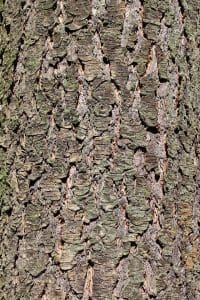
Flowers/Fruit
Douglas fir is monoecious, meaning that male and female flowers grow on the same tree. The male flowers are small, yellowish cones, up to 3cm long. They grow on the underside of the previous year’s shoots. They produce their nutritious pollen in spring.
The female flowers are grow at the end of last year’s shoots, they appear in spring and develop into the cones. The cones are red to green when young and become tan to brown when mature. When mature they hang down from the tree and are covered in scales that are arranged in spirals. At the top of each scale there is a unique three-pointed bract. Some say this looks like mouse tails. (They have 2 feet and a tail). Inside each scale there are 2 winged seeds.
Habitat
It’s widely planted for timber, so plantations but also parks and gardens where it is planted very its ornamental value. It’s most common in Western areas of the UK due to higher levels of rainfall.
Known Hazards
None known
Could be Confused with
Other conifers, the main one to be concerned about is Yew (Taxus baccata). Yew has flat needles that are pretty much odour less when crushed.
The true Firs, are very similar and can be used as a substitute. True Firs have cones that stand erect, they then disintegrate into many pieces, and the cones also lack the 3-pointed bracts of Douglas Fir.
How to tell the difference between Douglas Fir, Spruce and Pine Trees.
Edible Uses
Yes you can eat your Christmas tree!!!
Although the flavour comes from the essential oils within the needles and after a month in a warm living room most of these oils will have evaporated so you’re best finding one in the woods.
They need to be thought of as a flavouring rather than a vegetable though.
The young tips are the best and are available in spring. Finely chopped and added to salads they add a lovely zingy quality. They also a great addition to cures for meat and fish.
They are an interesting addition to tapenades and pesto’s too.
I use them a bit like Rosemary.
The flavour also works well in deserts, I blend a large handful of the needles with caster sugar and use this in shortbread recipes.
Young or older needles can be used in teas, infused in oils or vinegar’s.
Mead made with Douglas Fir is one of my favourite tipples.
Click here for our Douglas Fir and Apple Membrillo Recipe
Notes on Herbal Uses
The needles are high in Vitamin C and the young tips are used by herbalists to soothe dry, tickly coughs. The shoots contain a volatile oil that is rich in terpenes which have antiseptic, mucolytic and antibacterial properties.
The resin is antiseptic and has also been used to treat coughs and sore throats.
The Native Americans probably have the most experience using Douglas Fir and use various parts of the tree to treat cuts, boils, and other skin problems, coughs and sore throats, injured or dislocated bones, to promote vomiting, as a purgative, to treat diarrhoea, rheumatism, gonorrhoea, bleeding bowels, stomach problems, excessive menstruation, and allergies. The list goes on.
Extra notes from the Foragers
The thick bark of Douglas fir makes it one of the best at surviving forest fires. According to a Native American myth during forest fires mice would hid inside the cones of this tree and that is where the 3-pointed bracts came from.
Reference:
https://www.first-nature.com/trees/pseudotsuga-menzesii.php
lets take a closer look at the medicinal uses
https://forestry.usu.edu/files/utah-forest-facts/native-american-uses-of-utah-forest-trees.pdf



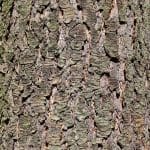
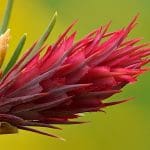
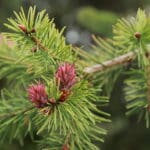
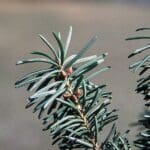
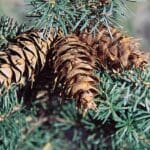
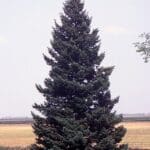
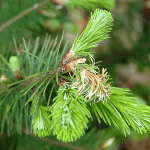
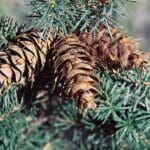
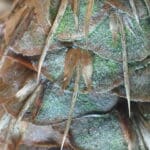



Leave a Reply
You must be logged in to post a comment.